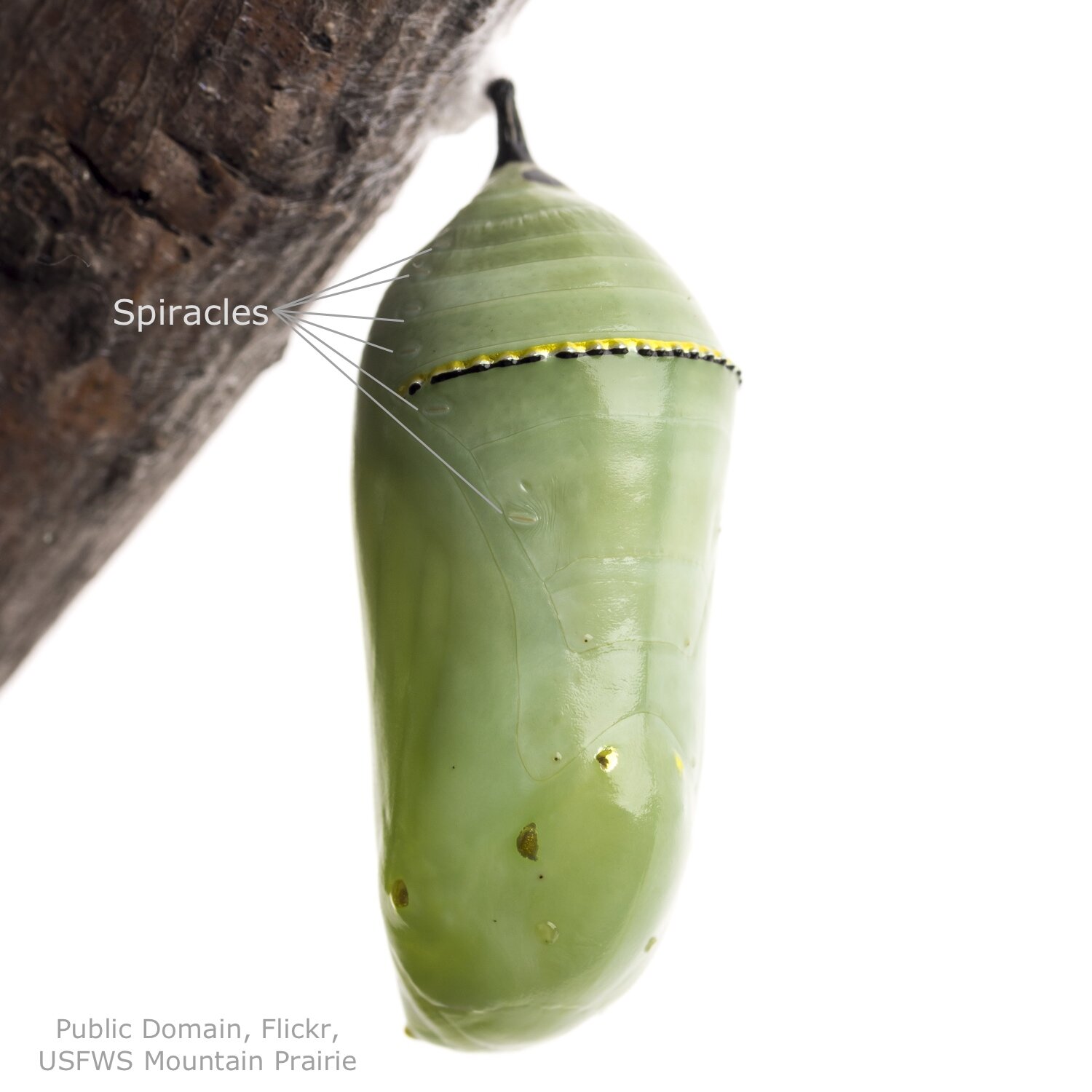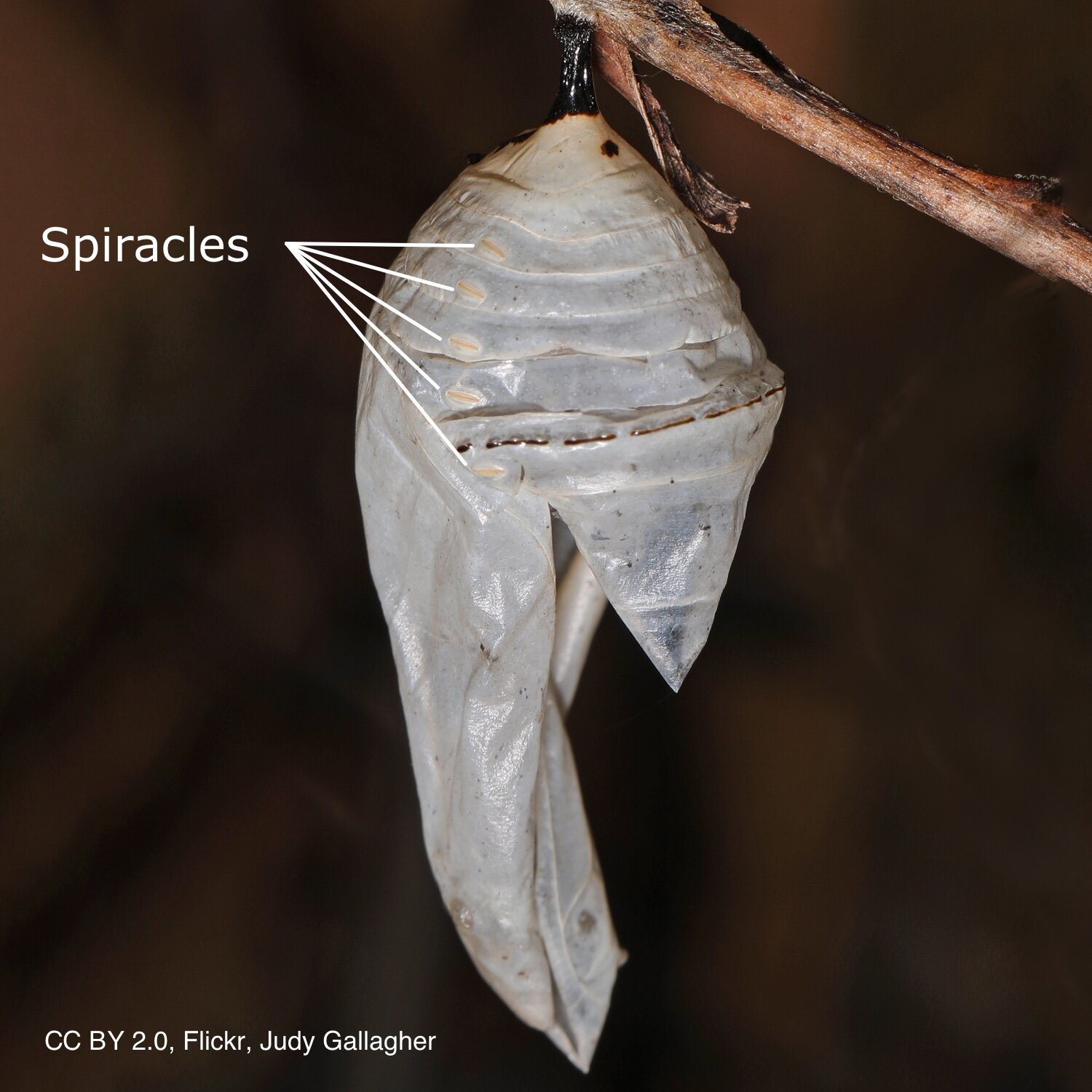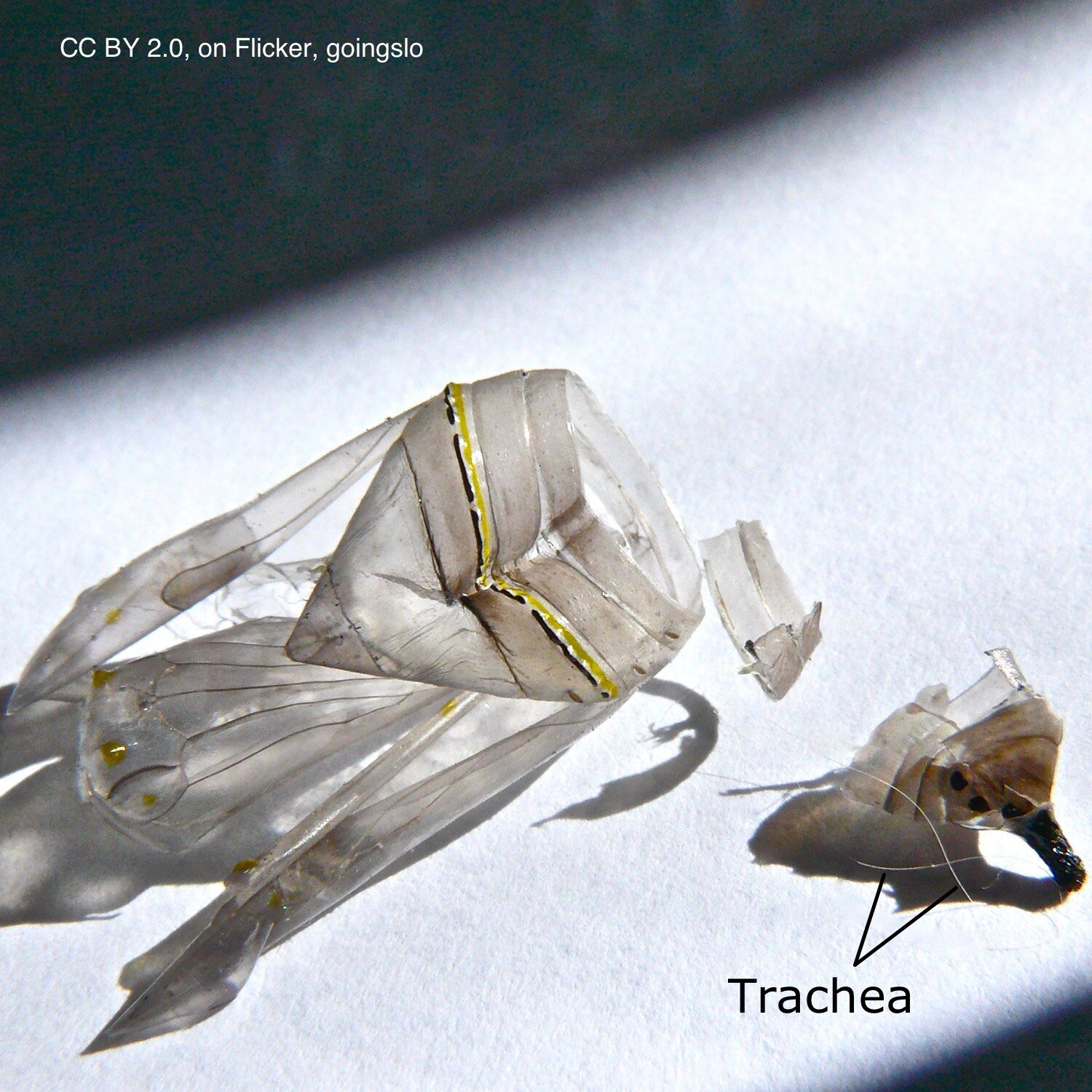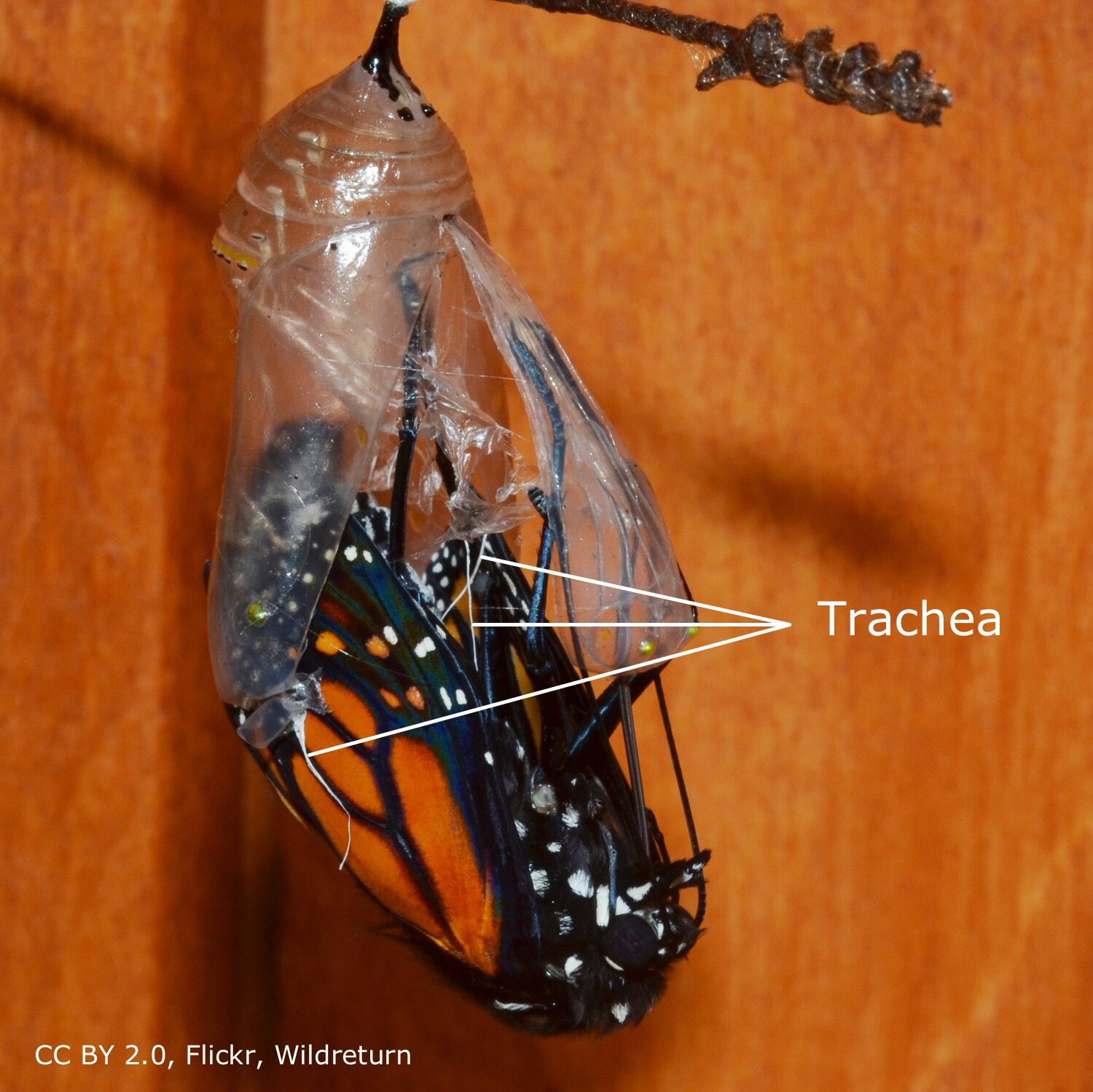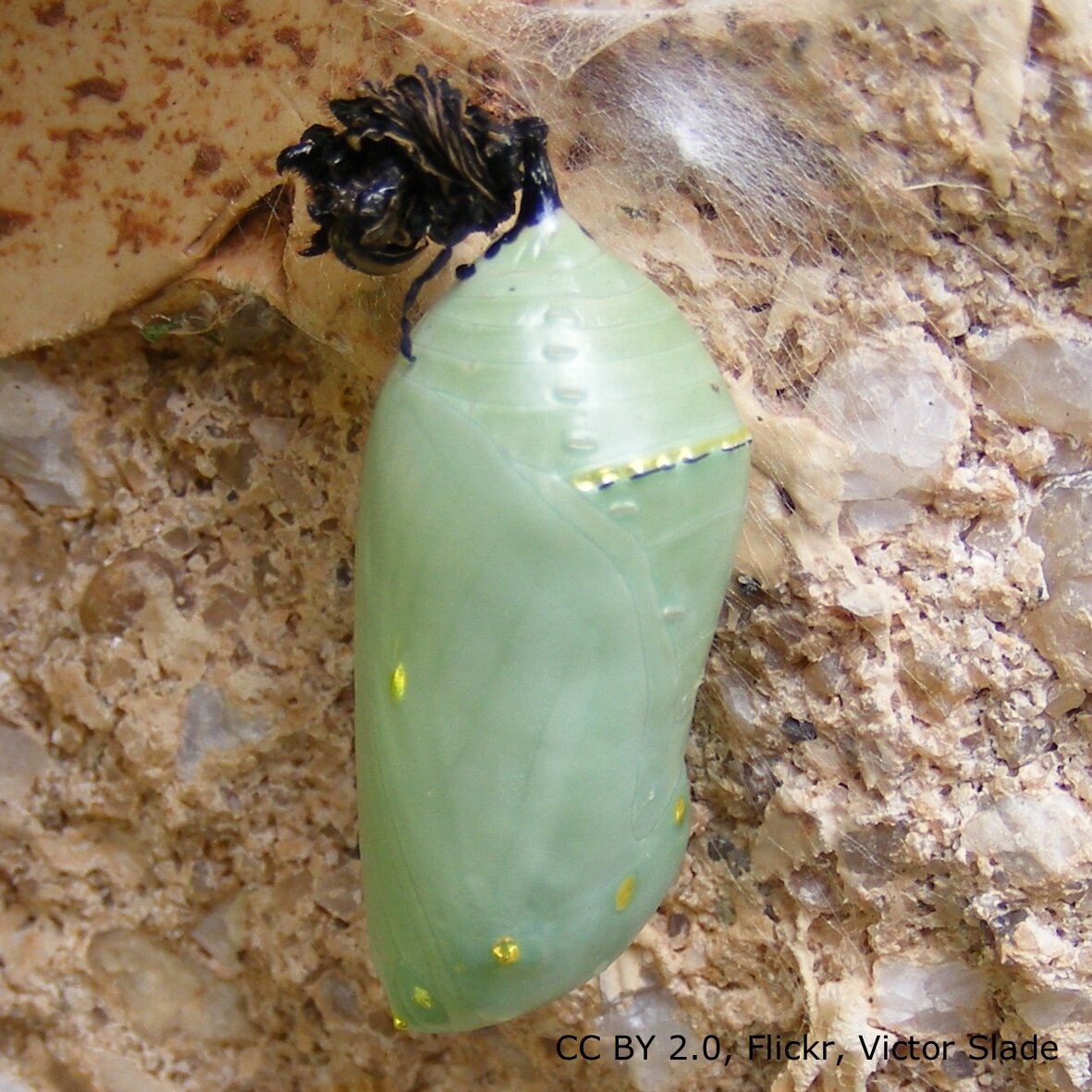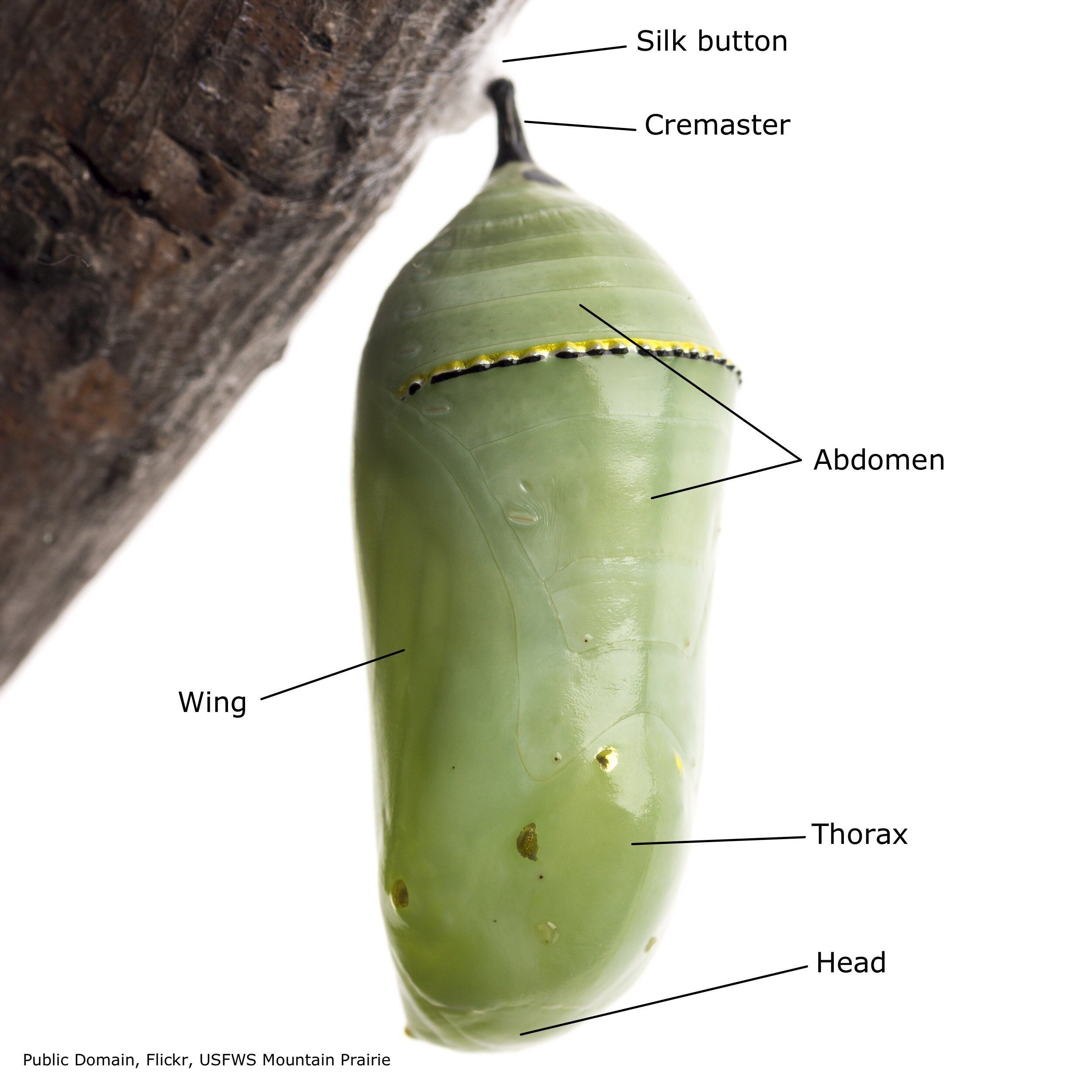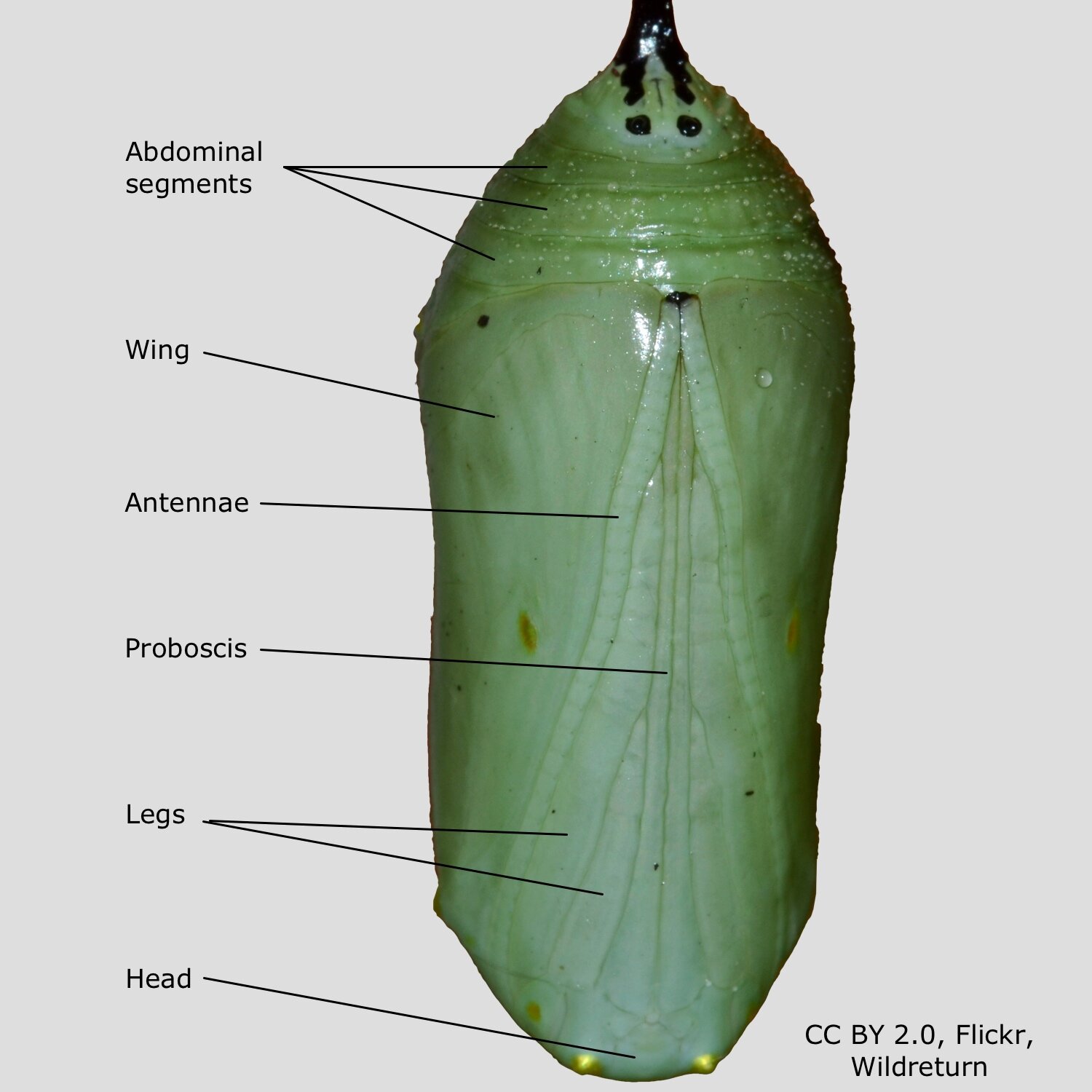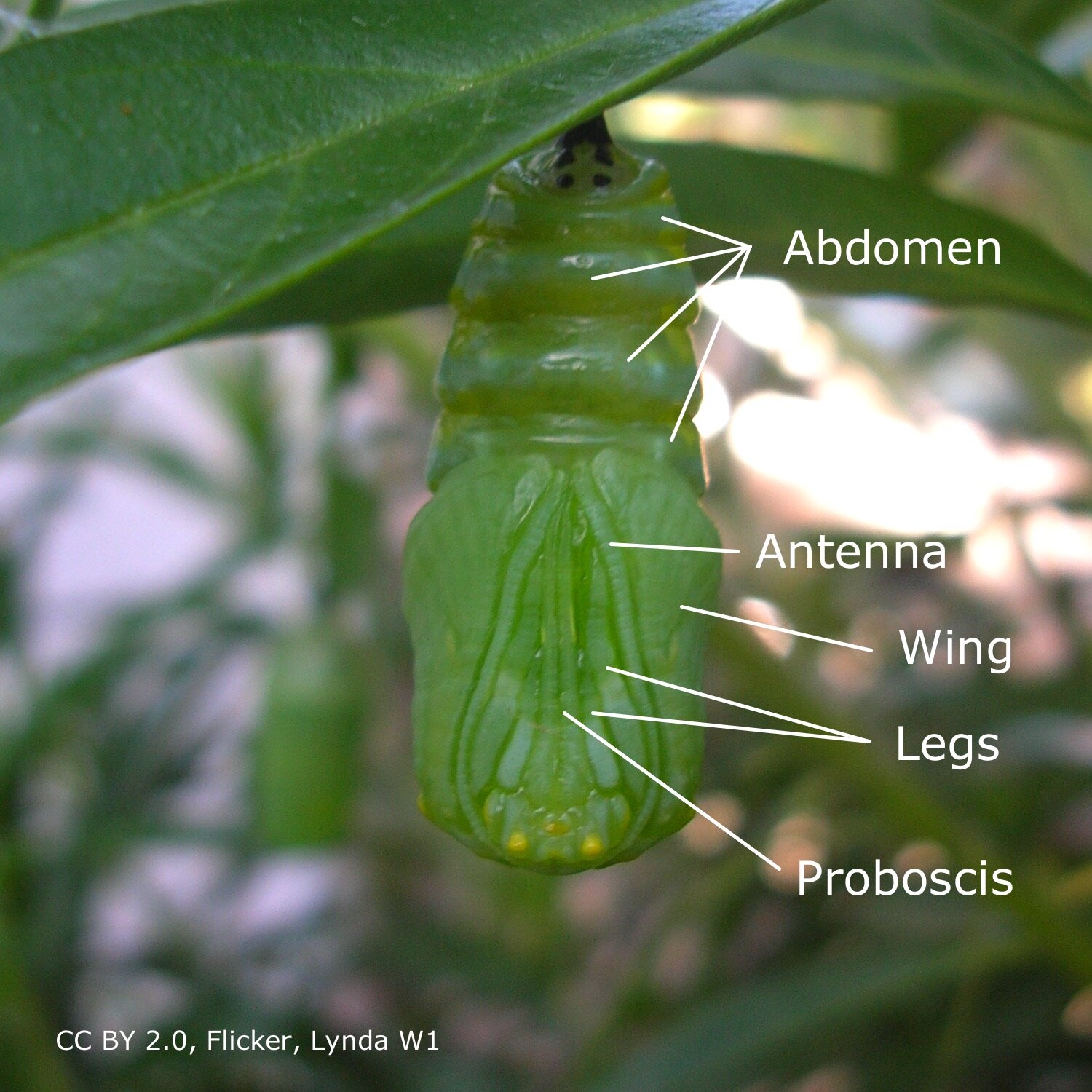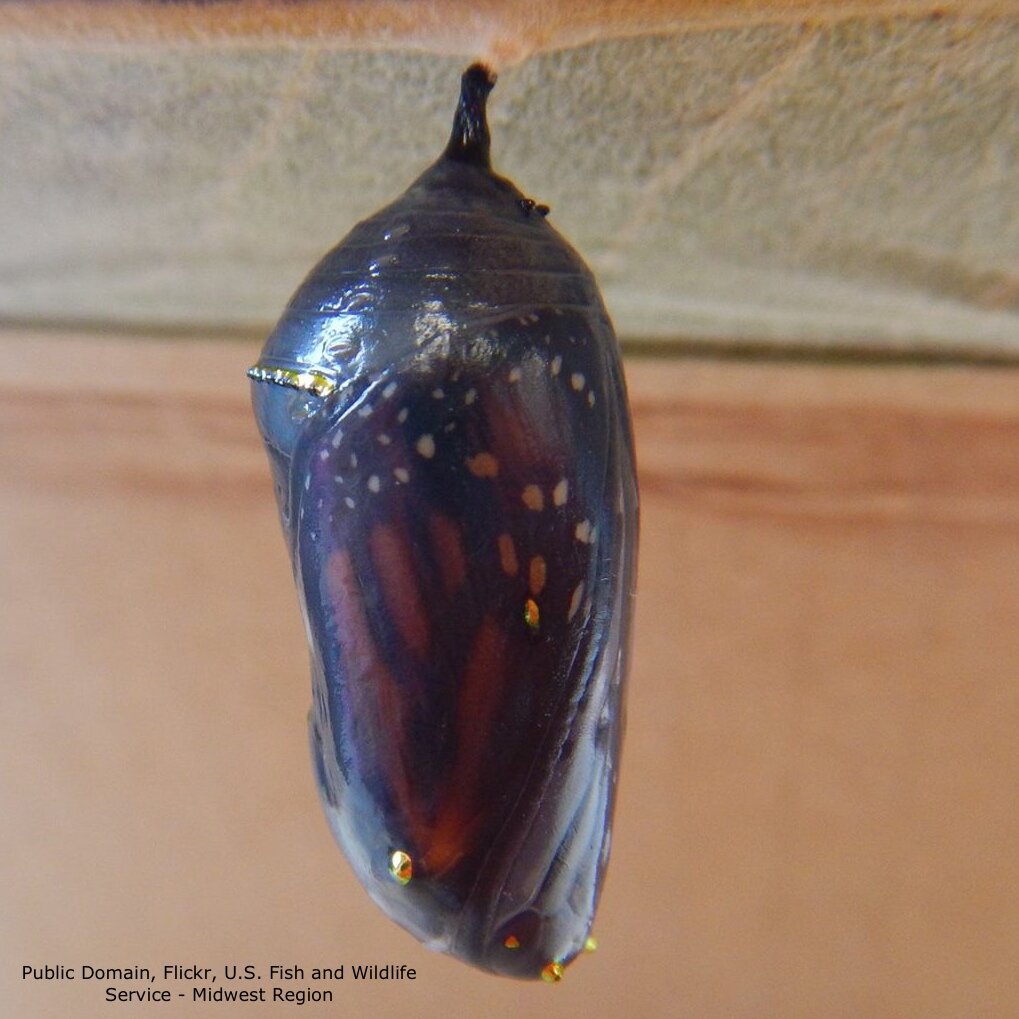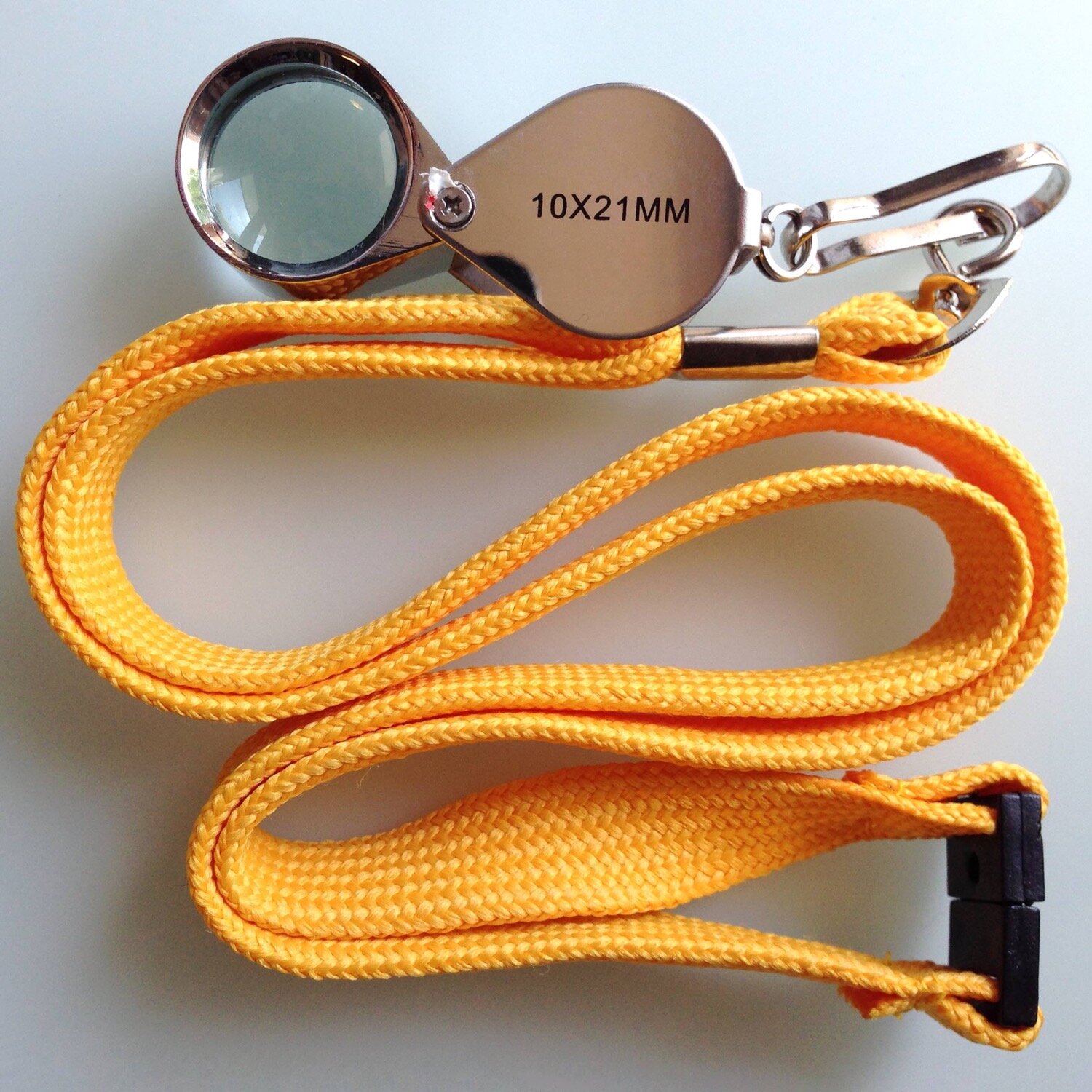| Raising monarchs | Eggs | Caterpillars | Chrysalis | Butterflies |
Monarch butterfly chrysalis
A decorative chrysalis protects the kahuku/monarch (Danaus plexippus) while it transforms from caterpillar to butterfly.
Once the butterfly has emerged the empty chrysalis is called an exuvia1 (Figures 2 & 3).
Spiracles & Trachea
The cuticle is the waterproof exterior of the chrysalis.
There are holes through the cuticle called spiracles (Figures 1 & 2). The spiracles connect to fine tubes (trachea) within the developing butterfly (Figure 3). The trachea enable gas exchange1. Some of the trachea are visible as fine threads when a butterfly emerges (Figure 6).
Cremaster
The caterpillar attaches itself to a silk button with its anal prolegs. But these are soon shed, along with the rest of the skin of the caterpillar. So the chrysalis replaces the proleg attachment with a peg-like part called a cremaster. The cremaster has many tiny hooklets to secure it to the silk2.
There is footage by Front Yard Video3 of the cremaster being inserted into the silk; see around 4:40 into the video.
Monarch body plan
The location of parts of the future butterfly are visible on the outside of the chrysalis4,5 (Figures 1-4). The parts are easiest to see soon after the chrysalis forms and then when the butterfly is about to emerge.
Related links:
| Raising monarchs | Eggs | Caterpillars | Chrysalis | Butterflies |
References
1. Gullan, P. J. & Cranston, P. S. The insects: an outline of entomology. (Wiley-Blackwell, 2010).
2. Gibbs, G. W., Berndt, Lisa, Pawson, S., Gibbs, G. W., & Entomological Society of New Zealand. The monarch butterfly in New Zealand. (2013).
3. Monarch Butterfly Metamorphosis Close Up FYV. https://www.youtube.com/watch?v=dfEmz3JssHU
4. Growth and Development. The Monarch Joint Venture. https://monarchjointventure.org/monarch-biology/growth-and-development.
5. Rea, B. About Monarchs. Monarchchaser’s Blog https://monarchchaser.wordpress.com/about-monarchs/.
6. Moths and Butterflies of New Zealand Trust - Pūrerehua Aotearoa.

